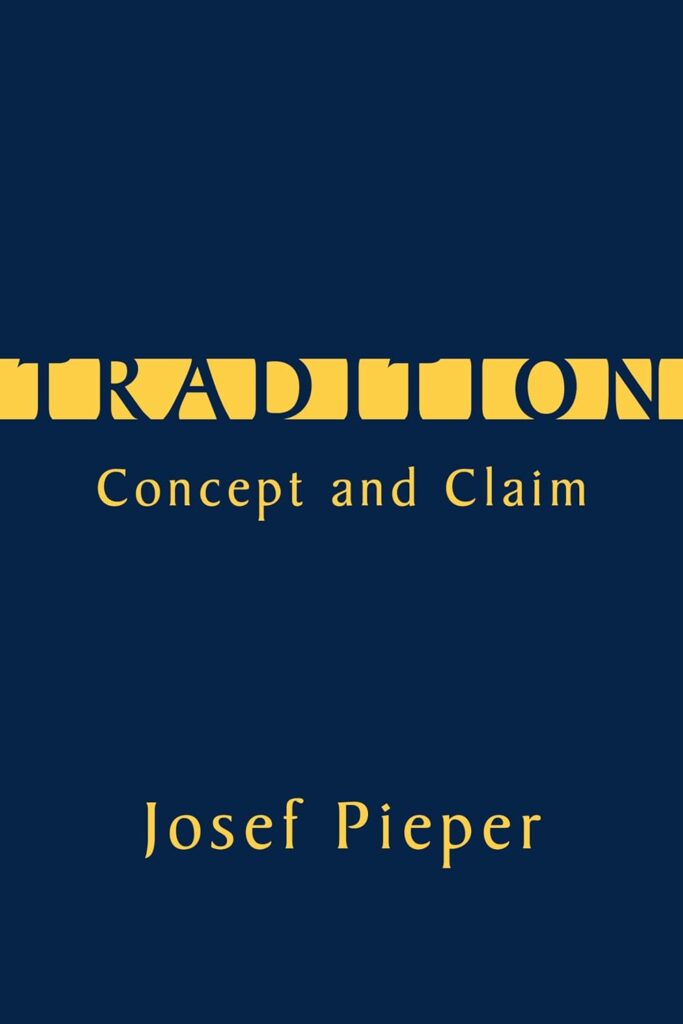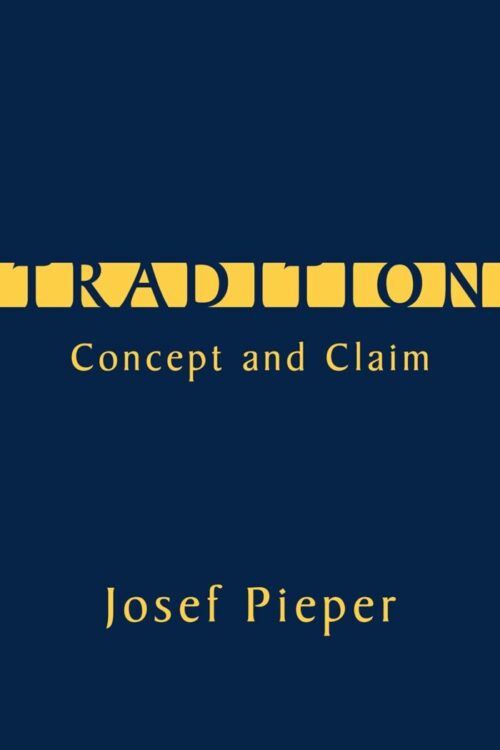I was reading again Josef Pieper’s essay, Tradition: Concept and Claim (originally published in 1970, but developed from a lecture given in 1957). In it, Pieper discusses the idea of tradition in a distinctively sacred key. For Pieper, by far the most important variety of tradition is “sacred” tradition, because the reasons to value tradition have not so much to do with a tradition’s being handed down as with the source of the tradition. Those that handed down the tradition as an initial matter were closest to the divine source of the tradition, and it is for that reason that the tradition has value.
Pieper’s is a bracing account of tradition because it differs so completely from the ways in which tradition generally is conceived and discussed today, in law and elsewhere, including by supporters of the influence and importance of tradition in these spheres. He allows that there are “secular” traditions but these are not really at all the traditions in which he is interested; secular traditions are instrumentally valuable (they enable life to “run along with less friction”) but not intrinsically valuable.
An interesting problem arises for Pieper when a tradition has both sacred and secular elements–or, more precisely, when people employ a variety of secular traditions in order to preserve, uphold, and transmit the sacred tradition. In responding to the problem, Pieper offers an allegory–the allegory of the black bread (p.40):

In my grandparents’ day, it was a settled custom in peasant households that the father had to slice the bread for suppertime. If he was beginning to cut a new loaf, he made the sign of the cross over it with the knife. It was done, as I saw many times as a child, almost casually, even furtively, but it was never omitted. Things have changed since then. We no longer bake those enormous loaves of black bread, which really needed a grown man to master them. Now we have machines to slice the bread, and most of the time the bread comes from the store or factory already sliced. In a word, this beautiful tradition too has passed away. It does not take much imagination to see how many themes are present here for a truly pessimistic cultural critique (“machines replacing humans,” “urbanization,” “the collapse of the family,” and so forth).
Nevertheless, we can ask whether this kind of change is simply deplorable. Is it legitimate to speak in a more or less precise sense of a “loss of tradition” here? The answer to this question is made more complicated by the fact that here the purely technical process was clearly linked with elements of the sacred tradition. It seems to me that we could really talk about a “loss of tradition” and a “break with tradition” if the change affected the family’s order, and most of all what was meant by the holy sign of the cross; that is, such language is appropriate when that which is lost stands in more or less direct connection with the traditum, which alone must be unconditionally preserved. It is common for the essence of what must be preserved to become overgrown by and entangled with the concrete forms of historical life, and a change in the outer may very well threaten the pure preservation of the essence, so that anyone who carelessly discards or makes light of the “outer” traditions commits a dangerous act. A student of ethnology once told me that in a group that was driven out of its homeland, religious commitment might possibly grow looser to the same degree that the group moves away from baking its rolls in a certain way. Of course, the question remains open what is the cause here and what the effect, and whether we are not dealing with an extremely complex total process.


